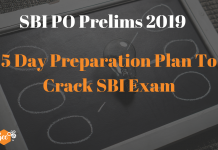April 13 holds a lot of importance to Indians globally both to celebrate Baisakhi and to remember the lives of the innocent people who were brutally massacred at Jallianwala Bagh.
Celebration
Baisakhi or Vaisakhi, usually celebrated on April 13. The day commemorates the tenth Sikh Guru, Guru Gobind Singhji, for establishing Khalsa Panth in 1699. Baisakhi also marks Sikh’s New Year. Solar New Year and the Spring Harvest are also celebrated on Baisakhi by the Hindus with equal fervour.
The tenth Guru of Sikhs, Guru Gobind Singh, asked people to sacrifice life for the Guru on Baisakhi. Only five people volunteered for the cause and came to be known as panj piaras. Widespread langars are organized across Punjab. People visit Gurdwaras, wear colourful clothes, dance on the folk music, and perform kirtans. Baisakhi Fair is very popular in Haryana. Baisakhi 2021 will be celebrated on April 14 though.
Remembrance
April 13 is also doomed in the Indian History as hundreds of people lost their lives to the British bullets at the Jallianwala Bagh, Amritsar in 1919. Let us dig deeper to understand the background which led to the Jallianwala Bagh Massacre.
Important Events leading to Jallianwalla Bagh Massacre
Defence of India Act 1915
Lots of soldiers and labourers supported the British Empire during World War 1. Necessary supplies were sent across West Africa, Europe and Middle East in large numbers by the princes and the Indian Administration to support the British cause. However, Punjab and West Bengal kept on creating regional disturbances to paralyse the regional administration.
In February 1915, the British Intelligence successfully thwarted a planned mutiny within the army. To avoid such mutinies in the future, The Defence of India Act was enacted to curtail the nationalist and civil liberties granted to the Indian citizens by the British government. This Act was an answer to the uprising of the anti-colonial activities across India especially Punjab and West Bengal.
This Act was widely supported by the non-official Indian members in the Viceroy’s council.
The Rowlatt Act 1917
The Rowlatt Committee was formed in 1917 to establish the links of the then Indian activists with the Germans and the Americans with respect to the support and financial aid for the revolutionary movements. The Committee was presided by Sidney Rowlatt, a British judge.
The committee concurred that Germany was indeed supporting the Indian revolutionary movement especially in Punjab and West Bengal and hence Rowlatt Act, or Black Act, came into existence. This Act created a lot of unrest among the people as the Viceroy’s government had powers to arrest political activists without a fair trial and repress sedition by silencing press and arresting people without warrant.
The Act was widely opposed by the non-official Indian members in the Viceroy’s council thus paving way for mass violence
Impact of Rowlatt Act, 1915
The Act came into being on March 22, 1915. There were largescale protests held across the regions, especially in Punjab, to get the Act revoked. Two prominent Congress leaders, Satyapal and Kichloo were arrested by the then Deputy Commissioner Miles Irving and were taken secretly to a place on April 10, 1919.
In retaliation, the protesters marched towards Irving’s bungalow when the British troops opened fire at the protesters. Wounded by the atrocities of the British government, widespread riots occurred across the city of Amritsar in which British banks were burnt, railways was vandalized, Britons were killed and a women missionary was attacked.
The Massacre Day
On the evening of April 13, thousands of people gathered at Jallianwala Bagh on the occasion of Baisakhi. The gathering also wanted to discuss the next steps of the protests. Gen. Reginald Edward Harry Dyer took the charge of Amritsar from Jalandhar on April 13.
Gen. Dyer received the information on the assembly of people at Jallianwala Bagh. The General took his heavily armed troops to the location and without a warning starting firing at the gathering. Jallianwala is enclosed from all sides but from one main door. So people ran towards the common gate to save their lives. However, the troops heavily guarded the gate aiming for maximum casualties. Few facts of what transpired on that fateful day are given below.
- 1650 rounds of bullets fired
- 379 people reported dead
- 1200 people reported injured
Repercussions of the Jallianwala Bagh Massacre
- Even after this ghastly act, Gen. Dyer received support from the House of Lords. The House presented him with a bejeweled sword with “Savious of Punjab” inscribed on it. The General was at the receiving end from the House of Commons.
- Rabindranath Tagore renounced his knighthood after he learned about the Jallianwala Bagh massacre
- Many Indians withdrew their support to the British Rule
- Non-Cooperation Movement united the Indians against the British Raj, and went on to gain total independence on August 15, 1947
Also Read:
INTERNATIONAL DAY OF REFLECTION ON THE 1994 GENOCIDE IN RWANDA – April 7
World Autism Awareness Day (WAAD) 2021
Good Friday 2021: Know The Significance here!
Get Free Online Test Series, GK updates in form of Beepedia, BeeBooster, as well as latest updates for Bank PO, Bank Clerk, SSC, RBI, NABARD, and Other Government Jobs.













